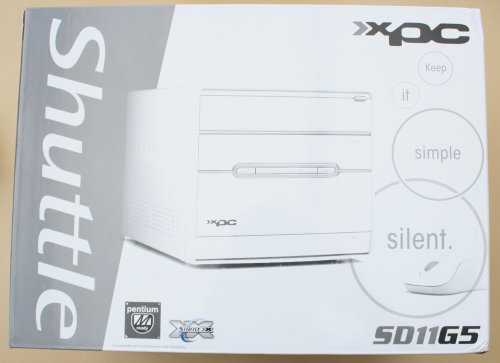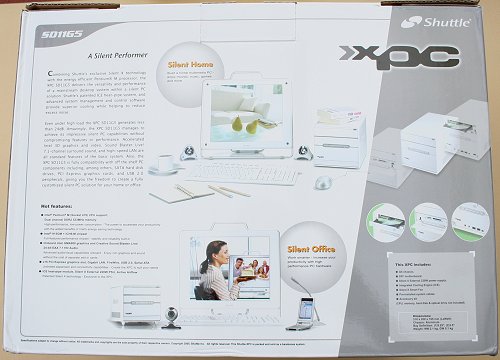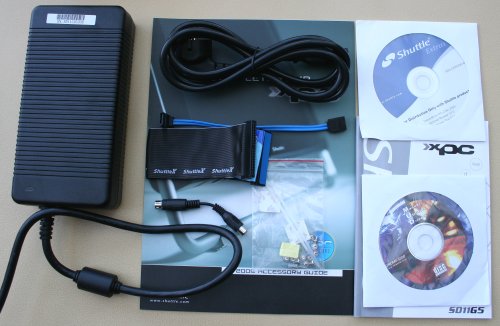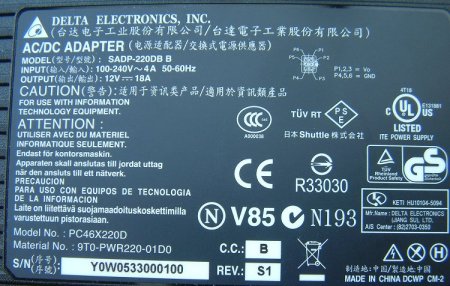Presentation and bundle

The box art matches the SD11G5's appearance, in that it's plain and has clean lines. The defining factor here is for Pentium M support, obviously.

The rear of the box, though, spells out exactly what's so great about the 2.1kg box of wonders. Shuttle doesn't miss the opportunity of showing you just how good it would look right next to a Shuttle ice-white TFT screen.

In keeping with XPCs in general, the bundle is pretty basic. The main instruction manual devotes around 65 pages to installation and usage, both in hardware and software terms. It's pretty good for the most part, covering all you need to know. Colour photographs are a handy touch, too. The driver CD contains just that; the requisite bunch of drivers to get all the features up and running for Windows OS'. On this occasion, there were no Linux drivers pre-supplied with the bundle. The second CD adds in a couple of Shuttle's favourites that have been recently updated, comprising of Trend Micro PC-Cillin 2005 (anti-virus) and Promagic Plus 6.01 (restoring) programs.
Hardware-wise, there's a single IDE and SATA cable, along with a power plug, various screws and ties, an S-Video-to-RCA converter, and, of course, the PSU brick that powers the system.

The external, fanless PSU pushes out around 220W and connects to the SD11G5 via the 6-pin connector we saw on the I/O section. Is 220W enough for a full XPC system? Taking into account the low-wattage nature of S479 CPUs, it should be. In fact, the biggest drain on power will not be the CPU; rather it's the optional use of a discrete PCIe graphics card.
Another basic bundle from Shuttle that's does the job.









